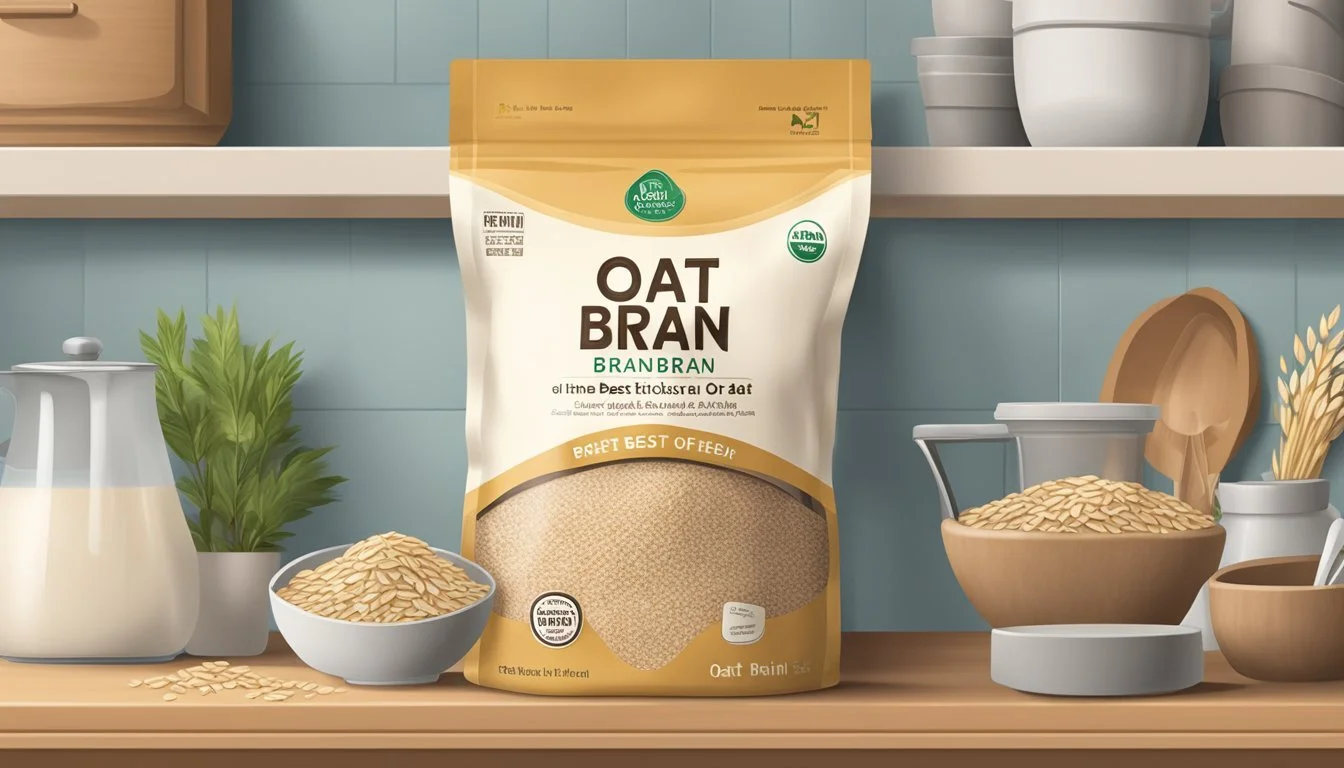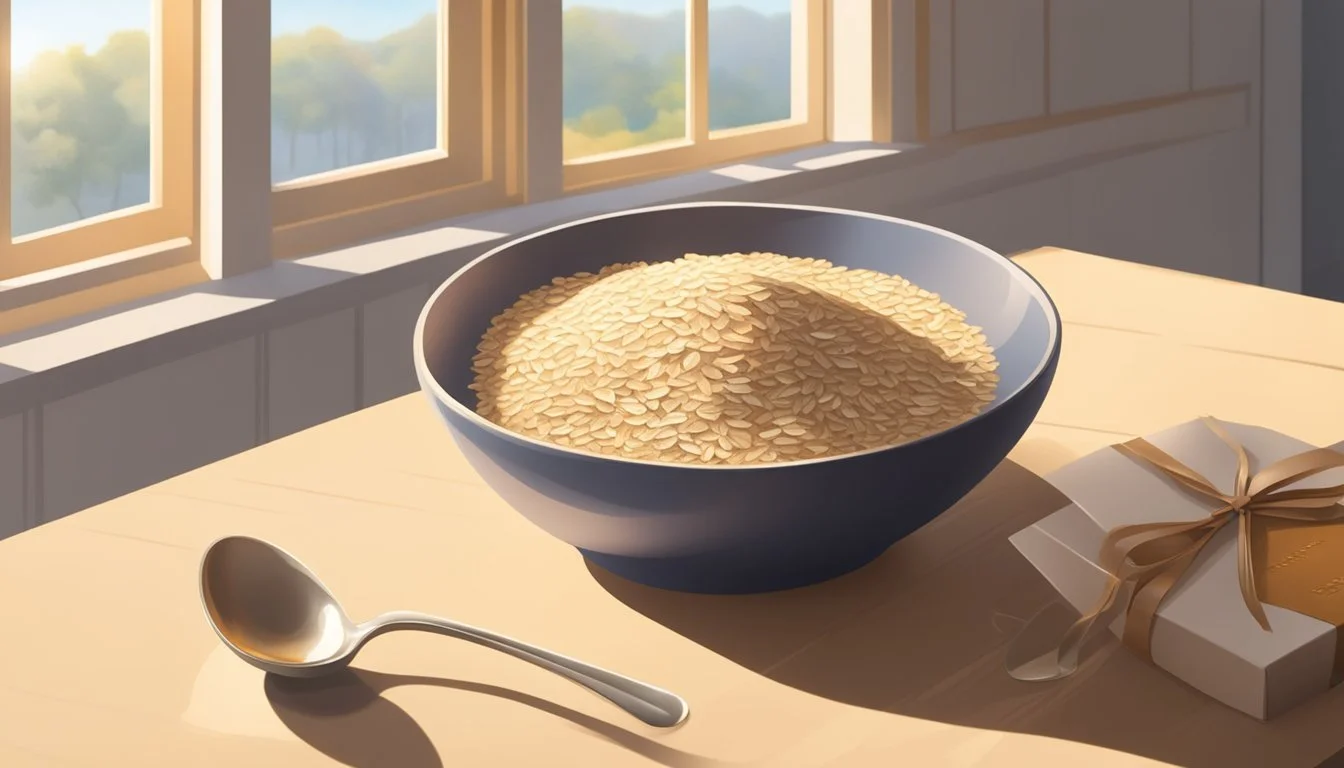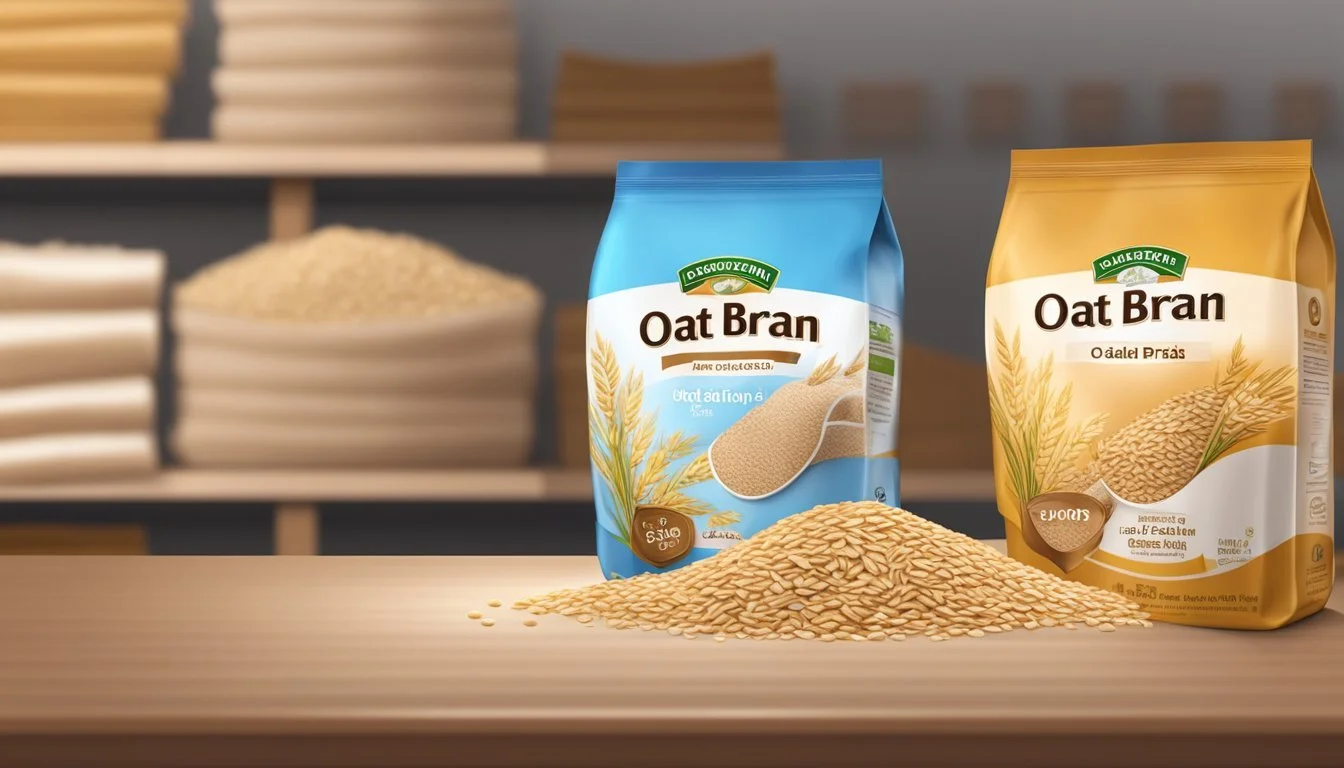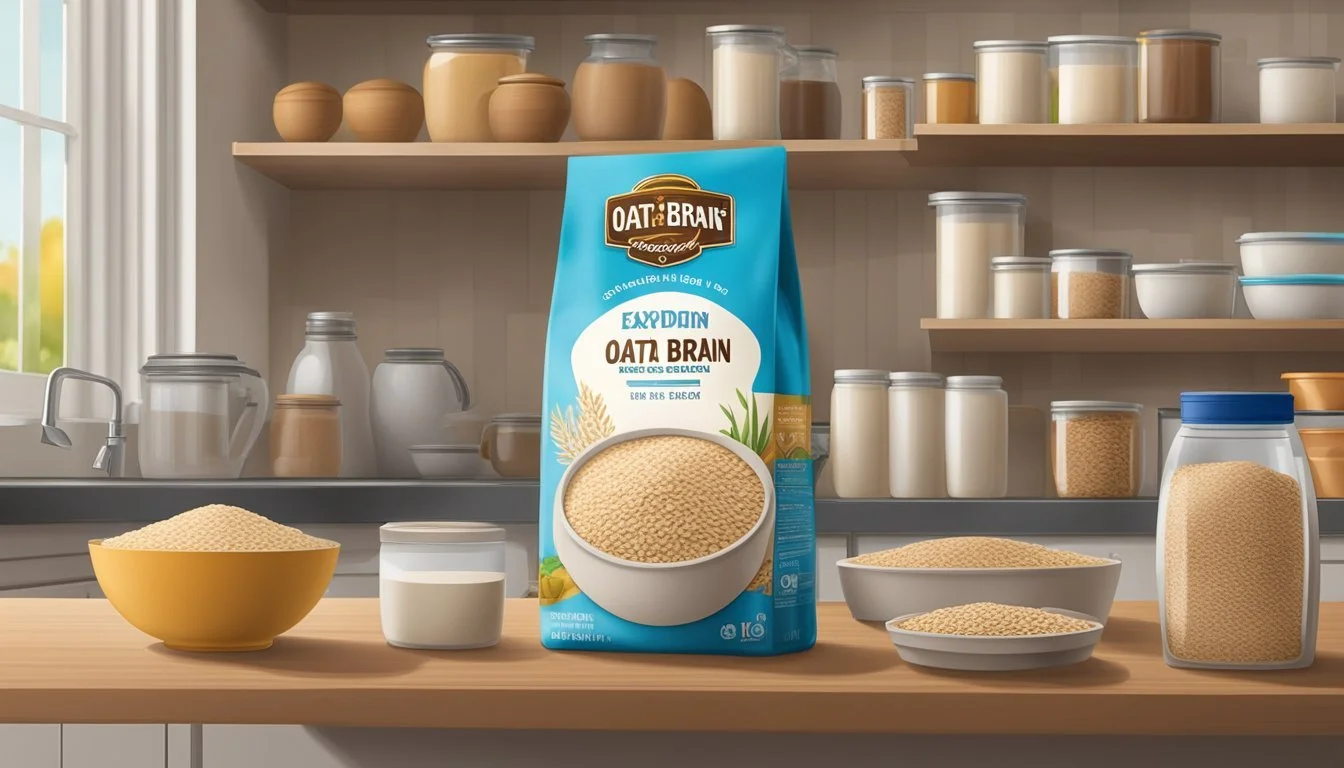Does Oat Bran Go Bad?
Signs, Storage Tips, and Expiration Facts
Oat bran, like many pantry staples, has a shelf life that determines its period of optimal freshness and safety. Typically, oat bran can last up to 12 months if stored in a cool, dry place. Proper storage can significantly extend its usability, helping prevent spoilage.
While oat bran doesn't spoil easily, it can go bad if exposed to moisture or improper storage conditions. Always check for signs of spoilage, such as an off-putting smell, foul taste, or the presence of mold. These indicators mean that the oat bran is no longer safe to eat.
For those storing oat bran, using airtight containers can help maintain freshness. Keeping it in a dry, cool place away from direct sunlight will also preserve its quality. Following these storage tips ensures that oat bran remains a nutritious addition to your diet for as long as possible.
Understanding Oat Bran
Oat bran is a nutrient-rich component derived from oats, known for its health benefits including high fiber content and essential vitamins and minerals.
Composition and Nutritional Value
Oat bran is the outer casing of the oat groat, separating it from the inedible husk. It is particularly rich in fiber, especially beta-glucan, which can help lower cholesterol levels and improve heart health.
A typical serving of oat bran provides significant amounts of protein, iron, magnesium, and calcium. It also contains antioxidants which protect the body from oxidative stress. Besides these, various vitamins and minerals such as B vitamins are present, making oat bran a highly nutritious supplement to a balanced diet.
Different Types of Oats
Oats can be processed into several forms, each with unique uses and textures. Whole oat groats are the most unrefined form, containing the entire grain kernel.
Steel-cut oats are chopped into pieces and have a chewy texture.
Rolled oats are steamed and flattened, making them ideal for quick cooking.
Quick oats are further steamed and rolled, cooking extremely fast.
Instant oats are pre-cooked and then dried, ready to eat almost immediately.
While oat bran is different from these types in that it is just the outer layer, each variety offers nutritional benefits and can be chosen depending on dietary needs and personal preferences.
Storage Guidelines
Proper storage conditions can significantly extend the shelf life of oat bran. By using the right packaging and containers, you can keep moisture and oxygen out, ensuring the oat bran remains fresh and safe to eat.
Proper Storage Conditions
Oat bran should be stored in a cool, dry, and dark place to preserve its freshness. These conditions help prevent the oils in the oat bran from oxidizing and going rancid.
A pantry or cupboard away from direct sunlight is ideal. If the temperature is consistent and not too warm, it can also be stored in a kitchen cabinet.
Temperature fluctuations, exposure to light, and high humidity can shorten the shelf life. Always ensure the storage area is stable and protected from these elements to maintain the quality of the oat bran.
Extending Shelf Life
To extend the shelf life, consider using airtight containers to store the oat bran. Removing as much air as possible before sealing the container helps reduce oxidation.
Oxygen absorbers placed inside the storage container can further aid in minimizing exposure to oxygen.
For even longer storage, keeping oat bran in the refrigerator or freezer can be beneficial. This approach maintains a consistent cool temperature, which is especially helpful in warm climates. Ensure the container is tightly sealed to prevent moisture from getting in when stored in the fridge or freezer.
Packaging and Containers
The choice of container plays a crucial role in storing oat bran. Plastic or glass containers with airtight seals are recommended.
#10 cans with oxygen absorbers are also effective for long-term storage. Make sure the container is clean and dry before placing the oat bran in it. Moisture is a significant factor in spoilage, so the container should be thoroughly sealed.
Resealable plastic bags or vacuum-sealed bags are other good options. Proper packaging ensures that the oat bran remains fresh and maintains its nutritional value for an extended period.
Identifying Spoilage
Knowing how to spot spoilage in oat bran ensures that it remains safe for consumption. Key signs include changes in odor, texture, and color, influenced by factors like moisture and air exposure.
Signs of Deterioration
Oat bran can show multiple indicators of spoilage. A rancid odor is a primary sign, often described as sour or musty. If the oat bran has an unusual smell, it is likely not safe to eat.
Discoloration also suggests spoilage. Fresh oat bran should have a consistent light brown color. Any changes, such as dark spots or a dull appearance, indicate degradation.
Texture changes are another red flag. Oat bran should be dry and slightly coarse. If it feels clumpy or mushy, moisture may have caused spoilage.
Visible mold is a clear sign. Mold spores can grow if the bran is exposed to moisture. In this case, discard the product to avoid health risks.
Factors Leading to Degradation
Several factors contribute to oat bran degradation. Exposure to moisture is a significant cause, leading to mold growth and texture changes. Ensuring dry storage conditions is crucial.
Air exposure accelerates oxidation, resulting in a rancid odor and taste. Use airtight containers to limit air access.
Contamination from pests such as bugs can also spoil oat bran. Storing the product in pest-proof containers helps mitigate this risk.
Light can degrade nutrients and change the color of oat bran. A cool, dark place is optimal for storage.
Finally, temperature fluctuations can hasten spoilage. Keep oat bran in a stable environment to maintain its quality.
Food Safety Considerations
Ensuring the safe consumption and proper handling of oat bran is essential to minimize health risks and maintain its quality.
Consumption Guidelines
Oat bran should be consumed within its expected shelf life to avoid rancidity and potential health risks. Unopened packages of oat bran, if stored in a cool, dry, and dark place, can last for about three months beyond the expiration date. Once opened, it's advisable to consume the oat bran within one month to ensure its quality.
Consumers should conduct a quick safety test before consuming oat bran. Look for signs of spoilage like off-odors, unusual color, or a stale taste. If any of these signs are present, the oat bran should be discarded. Regularly checking the oat bran’s condition ensures it is safe to eat.
Handling Contaminated Oat Bran
When oat bran shows signs of contamination, it is critical to handle and dispose of it properly to prevent foodborne illness. Contamination signs include insect presence, mold formation, or any foreign objects within the oat bran. If these signs are noted, the oat bran must be discarded immediately.
Avoid consuming oat bran if there is any doubt about its safety. Use clean, airtight containers for storage, and avoid exposure to moisture and light to reduce the risk of contamination. Proper storage practices help in maintaining the oat bran’s quality and safety for a longer duration.
Shelf Life of Oat Bran
Oat bran can remain viable for a considerable period, especially when stored correctly. Both its typical shelf life and the influence of its processing methods are crucial factors affecting its longevity.
Typical Shelf Life
Oat bran generally has a shelf life of up to 12 months when kept in a cool, dry place. Proper storage is essential to prevent the natural oils in the bran from going rancid. To achieve this, oat bran should be stored in a tightly sealed container.
When stored improperly, such as in areas exposed to light, heat, or moisture, the shelf life can significantly decrease. Check for expiration dates or "best by" dates, which usually provide guidance on optimal freshness. Observing these dates can help maximize the product's nutritional benefits and flavor.
Influence of Processing on Longevity
Commercially processed oat bran often has a longer shelf life compared to home-ground oat bran. The inclusion of preservatives and refined packaging methods contributes significantly to this extended lifespan.
For instance, industrial milling processes can reduce the moisture content, enhancing the shelflife. Conversely, if oat bran is ground and stored at home without any preservatives, its longevity may be reduced to around 3 months. Regularly checking the product for any signs of spoilage is recommended to maintain quality.
Alternative Uses for Expired Oat Bran
Expired oat bran can still be useful in various non-food applications. Repurposing it ensures that it doesn't go to waste and can still provide benefits in different contexts.
Non-Food Applications
Homemade Scrubs
Expired oat bran can be used to create exfoliating scrubs. Its coarse texture makes it ideal for removing dead skin cells. To make a scrub, mix oat bran with a small amount of honey and coconut oil. This mixture helps moisturize and cleanse the skin. Exfoliating with oat bran can also improve skin texture and reduce dryness.
Bath Bombs
Another great use for expired oat bran is in homemade bath bombs. The addition of oat bran to bath bombs can provide a soothing and gentle exfoliating effect in the bath. To make bath bombs, combine oat bran with baking soda, citric acid, and essential oils. The oat bran will help soften and nourish the skin during the bath.
By utilizing expired oat bran in these non-food ways, you can benefit from its properties without the need for consumption. It ensures that the product continues to provide value even past its expiration date.








